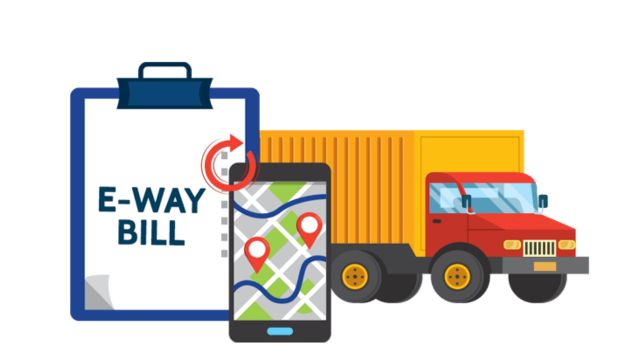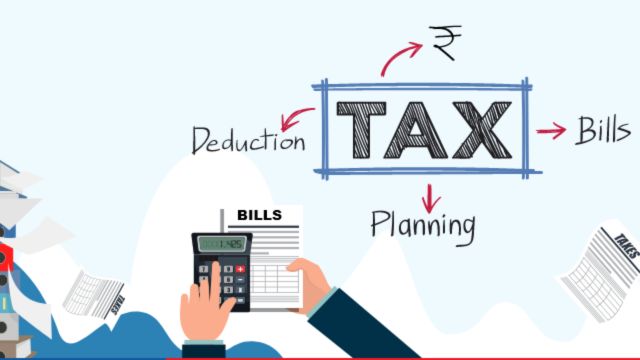The E-Waybill system, which replaces the paper-based permit procedure with a fully digital alternative, represents a significant evolution in the indirect taxes structure. The system was created to improve transparency and efficiency in the transportation of taxable products and to streamline the process of tracking the movement of goods. It was introduced on April 1st, 2018.
This digital project is a crucial component of broader reforms meant to streamline integration across different government systems, simplify compliance procedures, and cut down on paperwork. Better tracking, verification, and reporting capabilities are made possible, which helps not just tax authorities but also companies and carriers.
What is an E-Waybill?

A digital document created online for the transportation of goods whose value beyond a predetermined threshold—typically ₹50,000—is known as an E-Waybill, or Electronic Waybill. Under the indirect taxation system, it acts as a compliance instrument that enables authorities to confirm the authenticity and specifics of the commodities being carried.
Following generation, the E-Waybill is given a distinct 12-digit reference number that officials, transporters, and recipients can access via a mobile application or web interface. This lowers operational costs and the possibility of document loss by doing away with the need to transport printed papers.
Key Features of the E-Waybill System
Fully Digital Workflow
Through a centralized portal, registered users can generate, manage, and cancel E-Waybills as the system is fully online. This expedites the products clearance procedure and reduces the need for personal involvement.
Transporter Compliance Made Simpler
Instead of carrying a hard copy of the bill, carriers are simply expected to have the E-Waybill number on them while in transit. This lessens reliance on paperwork while also expediting the trip.
Recognition of the Recipient
Recipient verification offers an extra degree of transparency. The recipient can choose to accept or reject an E-Waybill if it is created using their tax identification number (GSTIN). This guarantees that both parties are informed about the transaction and can promptly identify any inconsistencies.
Integration of E-Invoices
The e-invoicing platform and the E-Waybill system are tightly connected. The data required for Part-A of the E-Waybill (such as invoice details) is automatically imported when an e-invoice is created. By doing this, data duplication is prevented and accuracy is increased while creating transport documentation.
Advanced Integration of Systems
Other digital systems like electronic toll collection (FASTag) and vehicle registration (VAHAN) are connected with the platform. Real-time data from these linkages can be utilized for trend analysis, fraud detection, and more efficient regulatory compliance.
Who Should Generate an E-Waybill?
Any transfer of goods that exceeds a specific value level requires an E-Waybill. It needs to be produced in the following circumstances:
- when a buyer receives items from a registered supplier.
- when a third-party logistics company or transporter is handling the goods’ transportation.
- while products are being transferred between warehouses.
- when a registered party participates in a transaction with an unregistered individual transporting goods.
Depending on the type of transaction and the mode of transportation, the supplier, recipient, or transporter may be in charge of creating the E-Waybill.
Step-by-Step Guide to Generate an E-Waybill
For registered users, creating an E-Waybill is a simple procedure:
- Use your authorized login credentials to access the official E-Waybill portal.
- Choose the “Generate a new E-Waybill” option.
- Enter the invoice number, date, value, and product details in Part-A of the form.
- Provide transportation information, including the vehicle number and transporter ID, in Part-B.
- To obtain a unique E-Waybill number, submit the form.
- Give the transporter the number or put it in your logistics paperwork.
The entire procedure usually only takes a few minutes and greatly cuts down on shipment delays.
The E-Waybill System’s advantages
There are various operational and regulatory advantages to implementing the E-Waybill system.
- Logistics efficiency: includes quicker processing and shorter checkpoint wait times.
- Accuracy and Consistency: Data mistakes are reduced by integration with e-invoicing.
- Accountability and Transparency: Transactions may be verified by recipients, enhancing mutual confidence.
- Decrease in Paperwork: The expenses of manual handling, printing, and storage are decreased with a fully paperless system.
- Data-Driven Insights: Authorities can keep an eye on trade movements and identify possible fraud with the aid of real-time analytics capabilities.
Enhancing Adherence Through Digital Revolution
The E-Waybill system is essential to improving compliance and creating a contemporary indirect tax environment. It adds a new degree of discipline and dependability to the movement of commodities with features including automated verification, centralized data storage, and real-time tracking.
Additionally, authorities are equipped with the means to examine irregularities and swiftly resolve non-compliance thanks to the interaction with vehicle and toll data systems. Faster turnaround times, fewer errors, and more seamless audit trails are all advantageous to businesses.
Conclusion
One significant development in the digitization of the movement of goods is the E-Waybill system. By improving traceability and encouraging transparency, it not only makes operations easier for companies and carriers, but it also fortifies the indirect tax system.
Systems like the E-Waybill will be the cornerstone of more extensive reforms that promote better compliance, wiser governance, and a more effective logistics environment as digital infrastructure develops further.
From online applications to real-time verifications, get a full view of digital services that matter. At Digital India MIB, we break down complex processes into simple steps—start using government digital services with confidence and clarity.
















